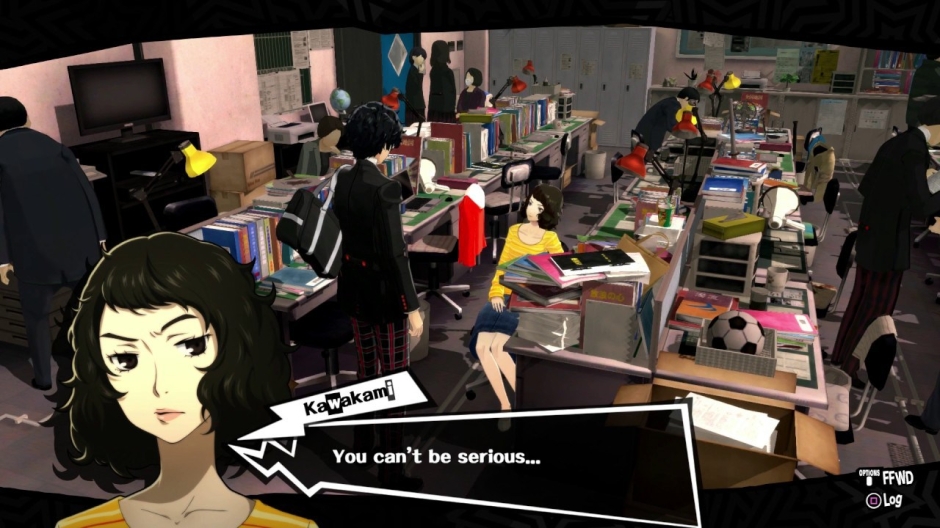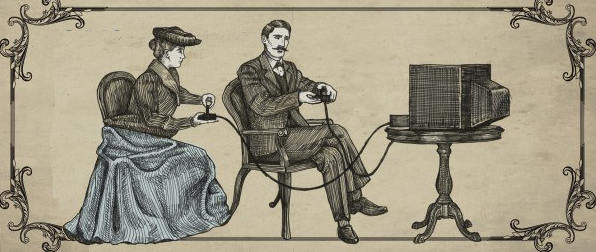First of all, I should introduce myself. My name is Alexander. I’m an attorney by day and a video game enthusiast/freelance writer by night. I’m also an attorney by night. There’s no escape from being an attorney, ever. It’s a special kind of hell.
Anyway, I’m both honored and happy to be here, and I hope I can contribute to this site, even if only in a small way.
My very first post here obviously has to do with Persona 5. As a serious fan of the Shin Megami Tensei series, of which the Persona series is a spinoff, I was anticipating Persona 5 for years. I, along with many other fans, endured a series of release date delays stretching from Winter 2014 all the way to April 4, 2017, when I finally received my preorder.
Atlus didn’t let me down. Persona 5 was the only game at all that I played during the little downtime I had throughout April and May. I even ended up neglecting the brilliant NieR: Automata to finish this thing. After completing the game, I had to conclude that Atlus had topped their previous efforts: while Persona 3 and 4 were both great games, Persona 5 is arguably better in every way than both of them. It’s so good, in fact, that I wouldn’t just recommend it to the typical JRPG fan, but even to people who wouldn’t normally get within ten miles of a typical JRPG. Why?
1) The combat system
Persona 5, like its predecessors, is a turn-based JRPG.
Do you remember all the buzz surrounding the release of Final Fantasy XV last year? Remember how a lot of it praised the real-time combat system as an improvement over the old turn-based system, which some dismissed as dated?
Persona 5 is the answer to claims that turn-based combat is dated. It uses the “one more turn” battle system established by Persona 3 that rewards the player for finding and exploiting enemy weaknesses. It also adds in the demon negotiation mechanic from the mainline Shin Megami Tensei games by letting the player make highwayman-style demands of enemies whose weaknesses have been hit when they’re all down. Enemies can even be recruited in this way – a key element to fusion, in which recruited enemies-turned-Personas can be merged into entirely new Personas with skills inherited from their “parents”. This combination of Persona and mainline SMT-style battle mechanics works well and keeps combat exciting throughout.

2) The story and characters
Persona 5 is about a group of misfit Japanese high school students with magical demon-summoning powers who use said powers to fight corruption as the masked “Phantom Thieves”. Specifically, they’re able to invade the minds of certain people with evil, twisted desires by entering and fighting through their “Palaces”, symbolic representations of their desires which exist in a dream world accessible through a mysterious app that the protagonist and friends have on their phones. By doing so, our heroes are able to force their targets to have a change of heart in the real world, where they admit and atone for their crimes by turning themselves into police custody. All the while, the protagonist has to live like a normal high school student by day, building relationships with his friends in the real world through the Social Link mechanic that strengthens his Persona fusion capabilities.
If you’ve played Persona 3 or 4, this should all sound familiar. Many of the elements that make Persona 5 special are carried over from its PS2 predecessors. But the story in Persona 5 is even more compelling, despite how outlandish it might seem at first. Every one of the Phantom Thieves’ targets has committed abuses that directly affect the protagonist or one or more of his friends, so they’re all emotionally invested in what they’re doing, both as a means of payback and to help other people who have suffered at their targets’ hands. The cast of characters also has great chemistry, and it’s a lot of fun to watch their relationships unfold.

3) The length and sheer amount of content
Persona 5, at least as I played it, is something like 25 to 50 percent longer than Persona 3 and Persona 4 were. My two-month playthrough of the game took over 130 hours to complete. If you’re not as obsessive about filling up the Compendium with Personas as I am, your playthrough might last 90 to 100 hours, but that’s still pretty long, even for a JRPG. The truly insane may even choose to pursue a second playthrough to complete social links they missed out on the first time around and to enjoy the benefits afforded by the New Game+ option (such as the ability to immediately summon a level 86 Alice that can kill most of the game’s bosses within a few turns.)
The length of Persona 5 may be a turn-off for some people. The game admittedly has a slow start, and some players may feel the need to grind a few dungeons in order to defeat the more frustrating bosses. However, Persona 5 has a lot more to offer the player than mere grinding. The combat-heavy sections of the game are well balanced with the visual novel-esque social link and plot-heavy sections, and the pacing was good enough to keep me going for well over 100 hours. In other words, Persona 5 doesn’t drag and it offers a lot of bang for your buck, even at its original $60 price tag.
So that’s my review/unpaid pitch for Persona 5. I really loved this game, and you’ll probably love it too. Unless you really, really can’t stand the concept of turn-based combat, in which case you’d better stay as far away from the Persona series as possible.

